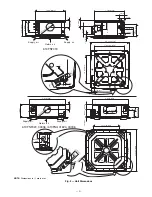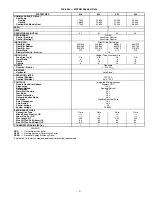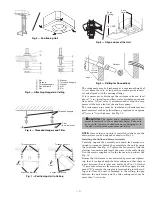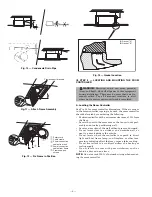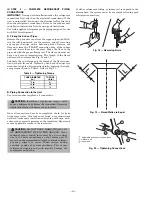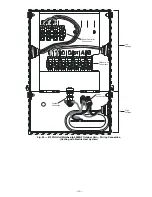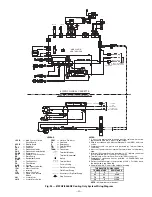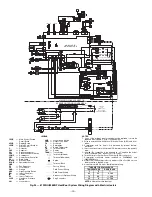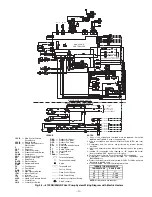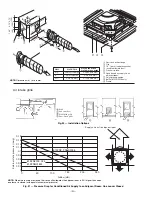
—10—
IV. STEP 4 — COMPLETE REFRIGERANT PIPING
CONNECTIONS
IMPORTANT:
During unit installation make the refrigerant
connections first and then the electrical connections. If the
unit is uninstalled, disconnect the electrical cables first and
then the refrigerant connections. Refer to the outdoor unit
installation instructions for tube sizing and limitations.
Use field-supplied refrigerant grade piping designed for use
with R-410A refrigerant.
A. Flaring the Ends of Pipes
Remove the protective caps from the copper pipe ends. Hold-
ing the tube downward, cut the extreme end off, removing
any copper shavings with a deburring blade. Remove the
flare nuts from the “FLARE” connection body of the indoor
unit and insert them into the pipes. Make the flare to the
pipe end with the proper flaring tool. The flare end must not
have any burrs or imperfections. The length of the flared
walls must be uniform. See Fig. 18 and 19.
Lubricate the end of pipe and the thread of the flare connec-
tion with anti-freeze oil. Tighten by hand and then use two
wrenches to tighten all connections fully, applying the tight-
ening torque shown in Table 5. Refer to Fig. 20.
Table 5 — Tightening Torque
B. Piping Connection to the Unit
Use two wrenches to tighten all connections.
Once all connections have been completed, check for leaks
using soapy water. If no leaks were found, wrap connections
with anti-condensate insulation and tighten with tape, with-
out exerting excessive pressure on the insulation. Repair and
cover any possible cracks in the insulation.
If either refrigerant tubing or indoor coil is exposed to the
atmosphere, the system must be evacuated following good
refrigeration practices.
TUBE DIAMETER
(in.)
TORQUE
(ft-lb)
3
/
8
in.
31
5
/
8
in.
48
3
/
4
in.
74
CAUTION:
Insufficient tightening torque could
cause a refrigerant leak from the connection. Excessive
tightening torque will damage the pipe flare.
CAUTION:
DO NOT BURY MORE THAN 36 IN.
OF REFRIGERANT PIPE IN THE GROUND. If any
section of pipe is buried, there must be a 6-in. vertical
rise to the valve connections on the outdoor unit. If
more than the recommended length is buried, refriger-
ant may migrate to cooler, buried section during
extended periods of system shutdown. This causes
refrigerant slugging and could possibly damage the
compressor at start-up.
L
L
Adjustable wrench or torque wrench
Outdoor end
Indoor end
3
1
2
Fig. 18 — Removing Burrs
Fig. 19 — Flared Walls are Equal
Fig. 20 — Tightening Connections



